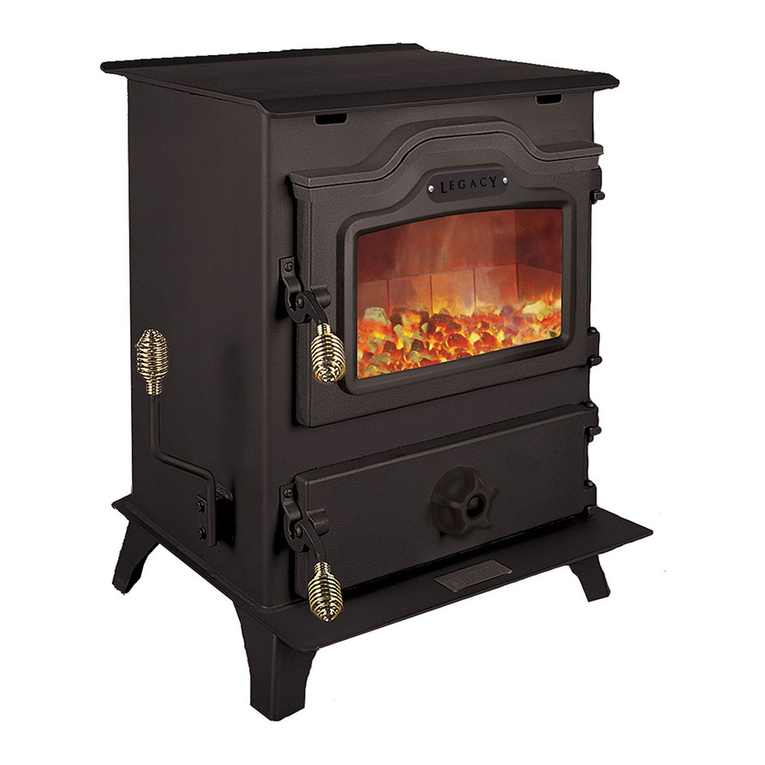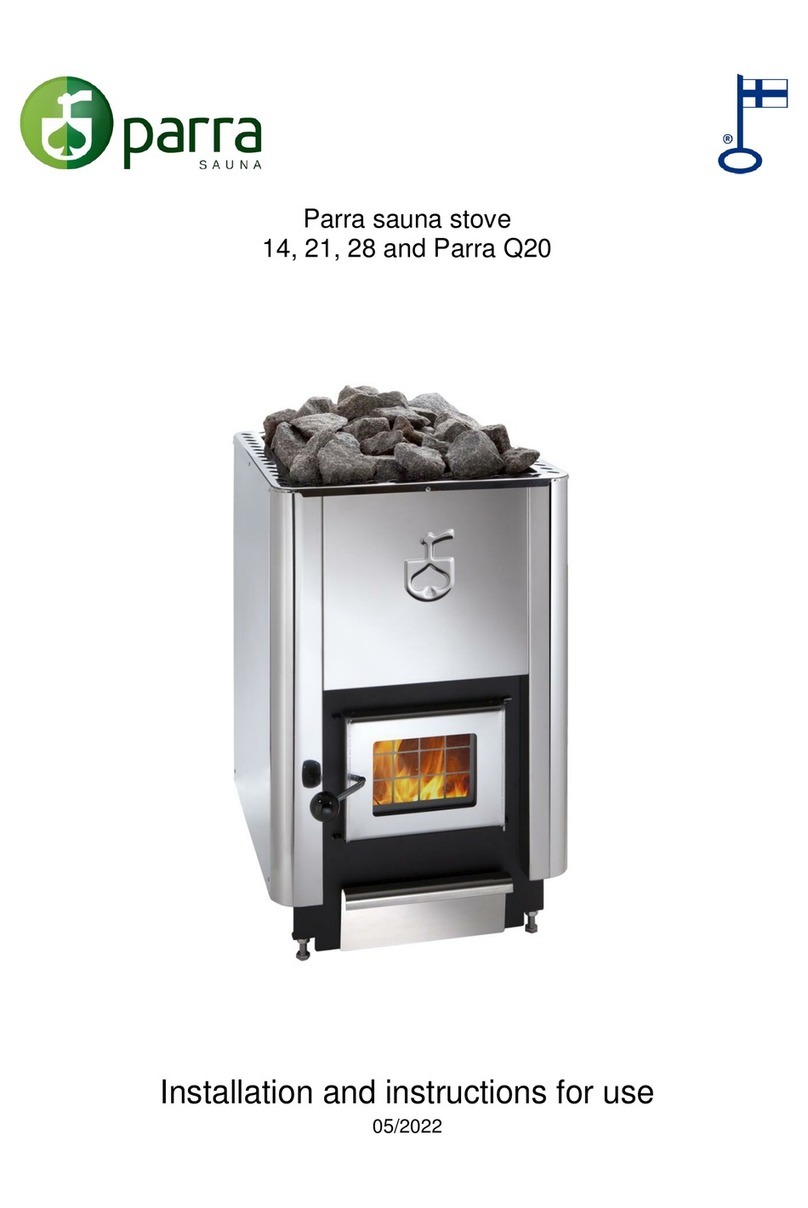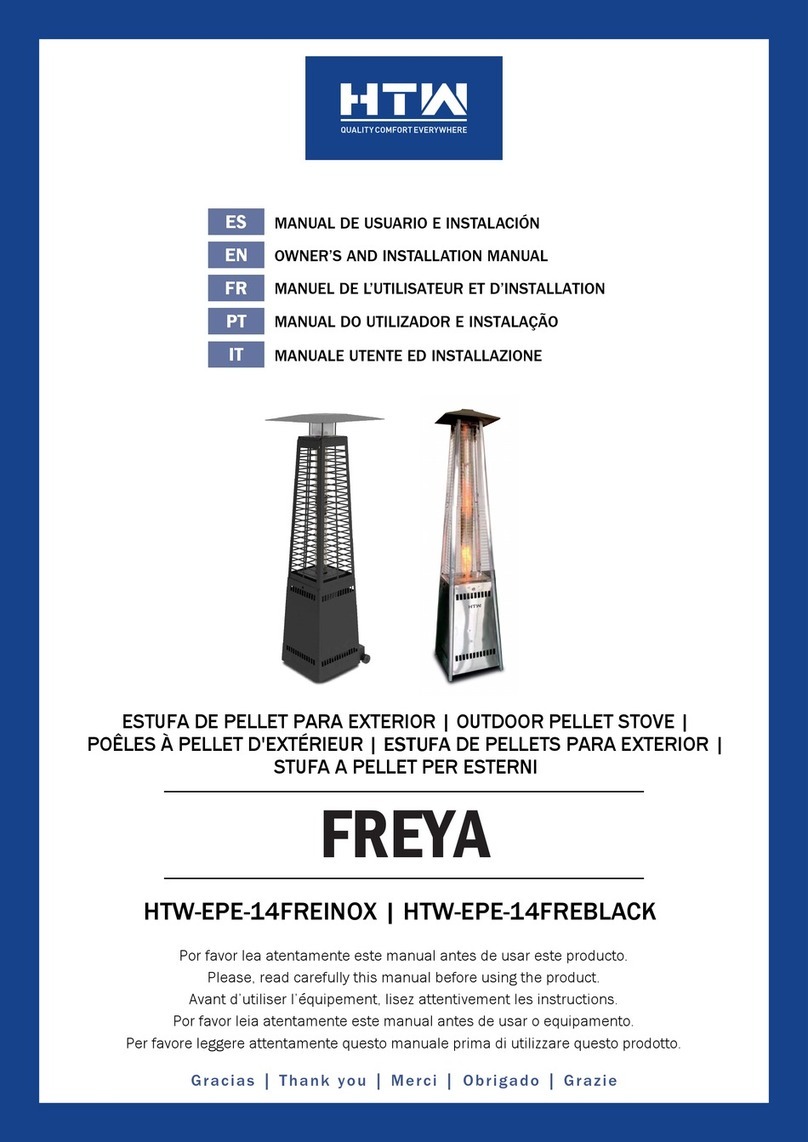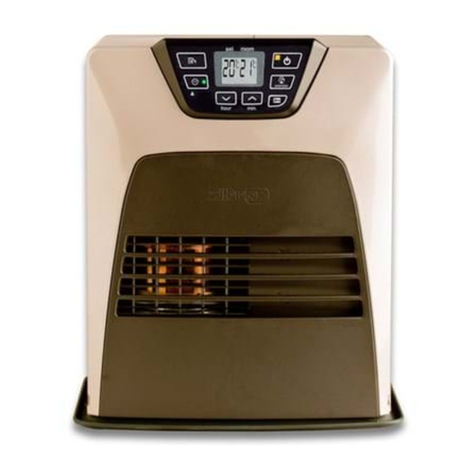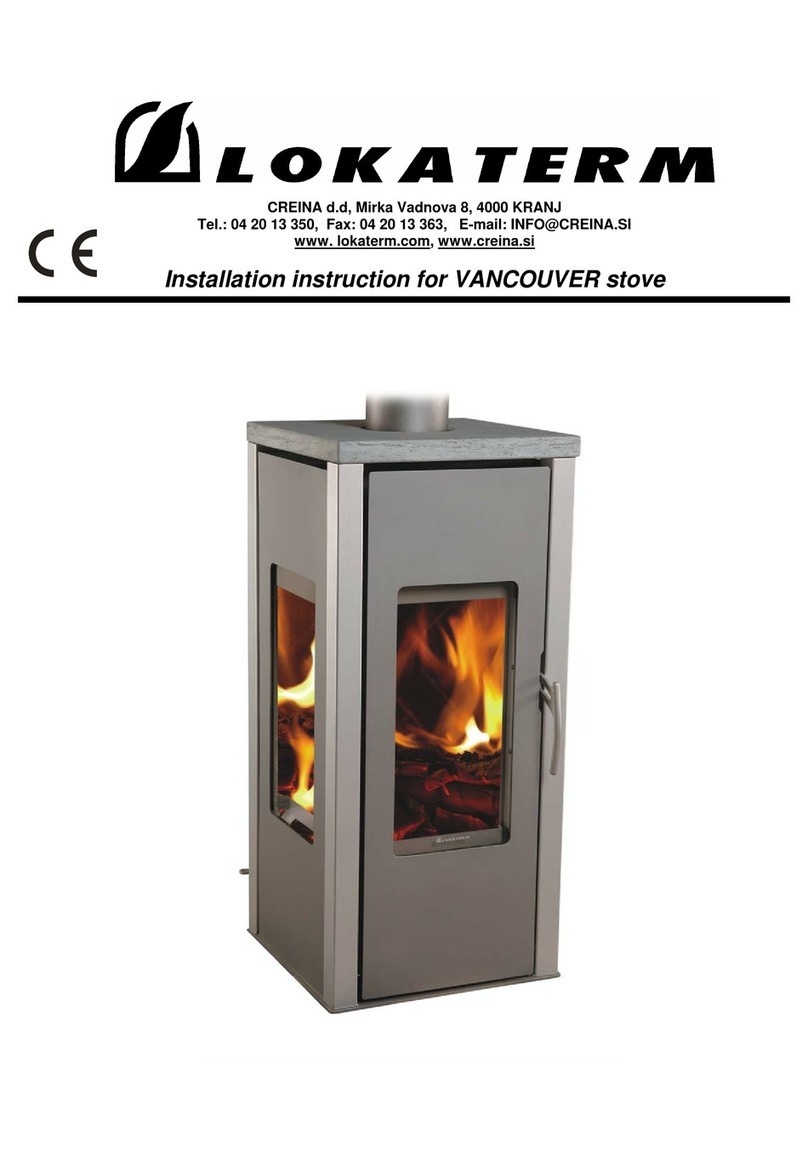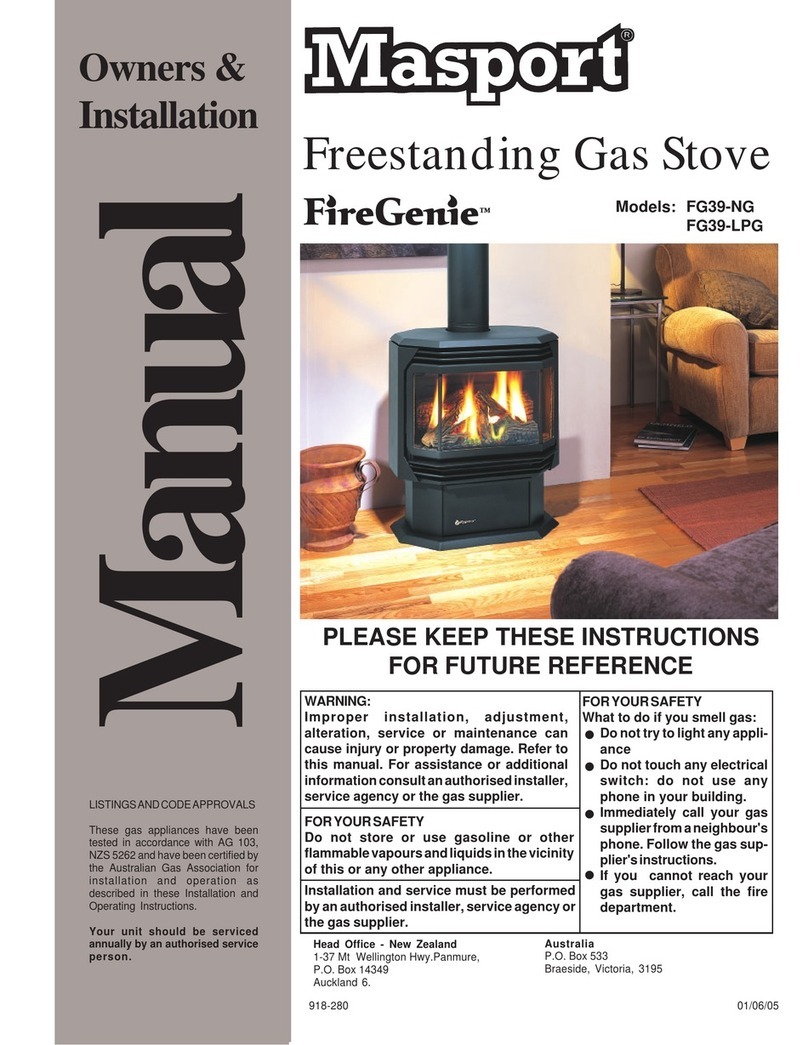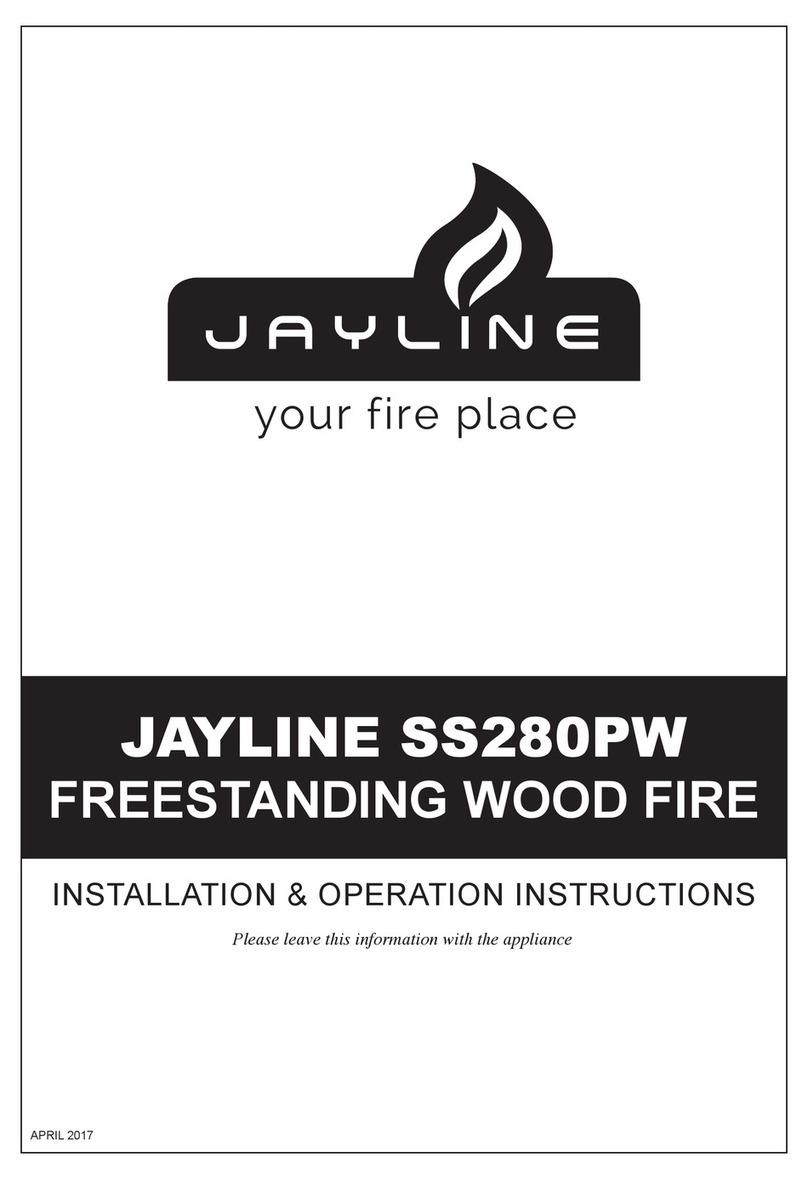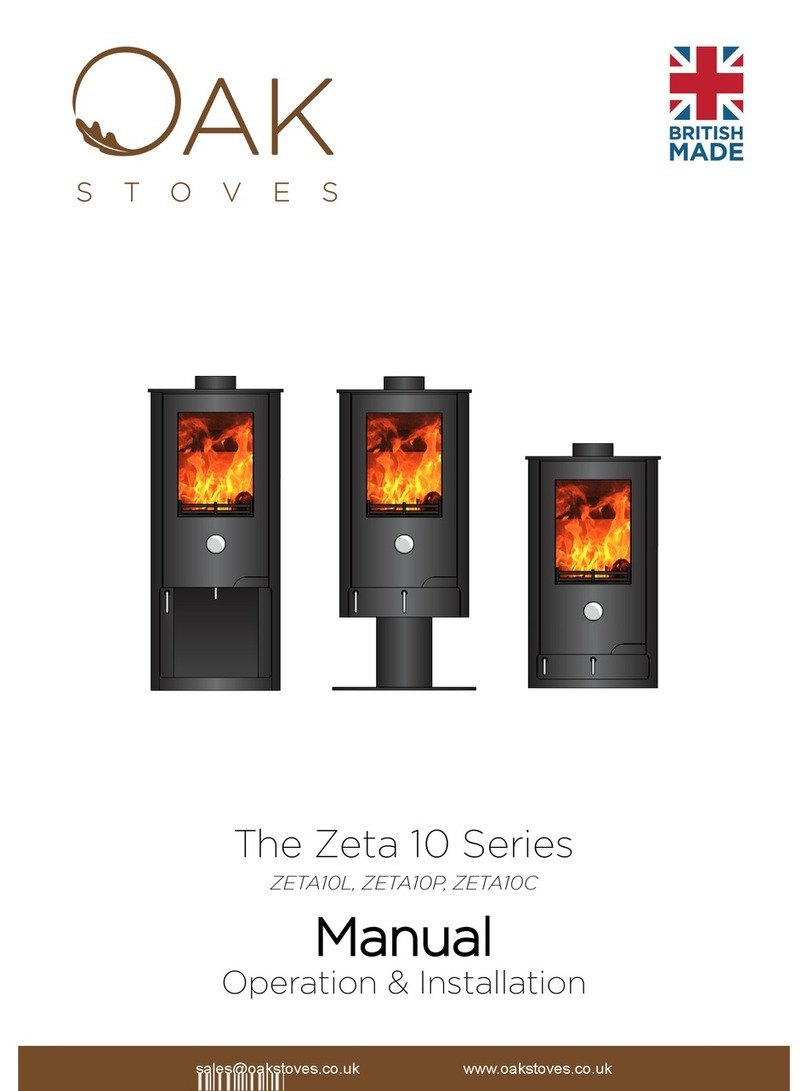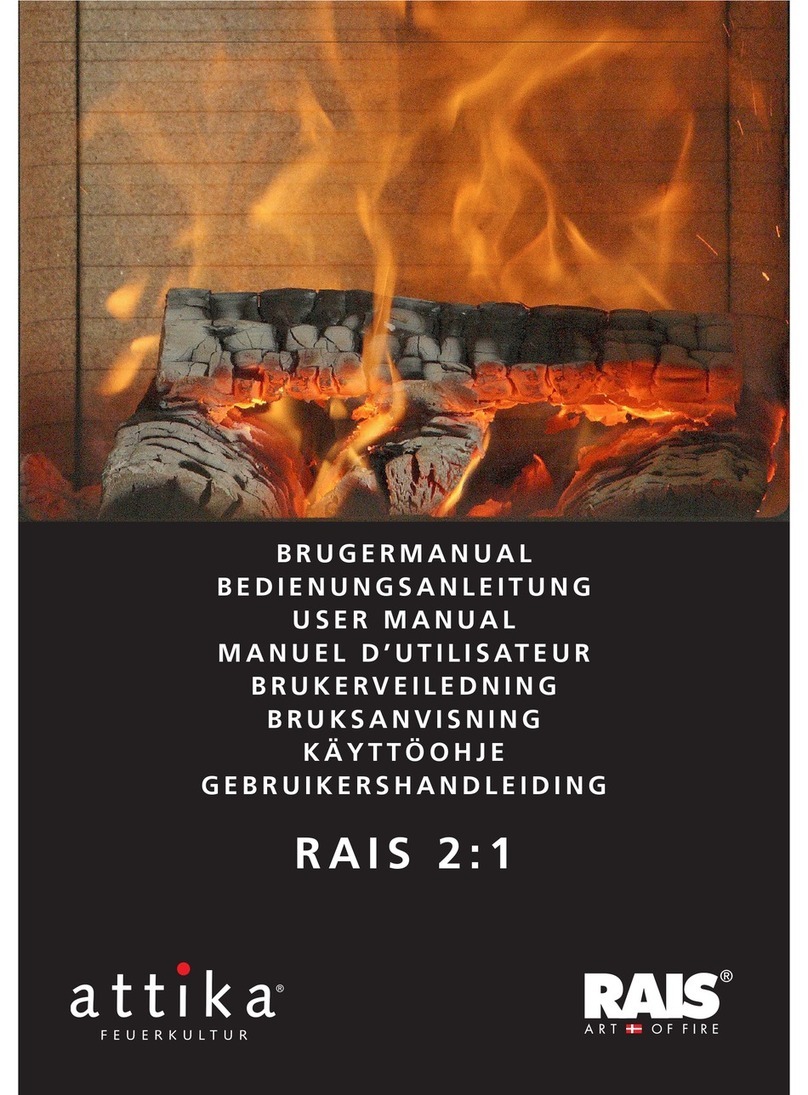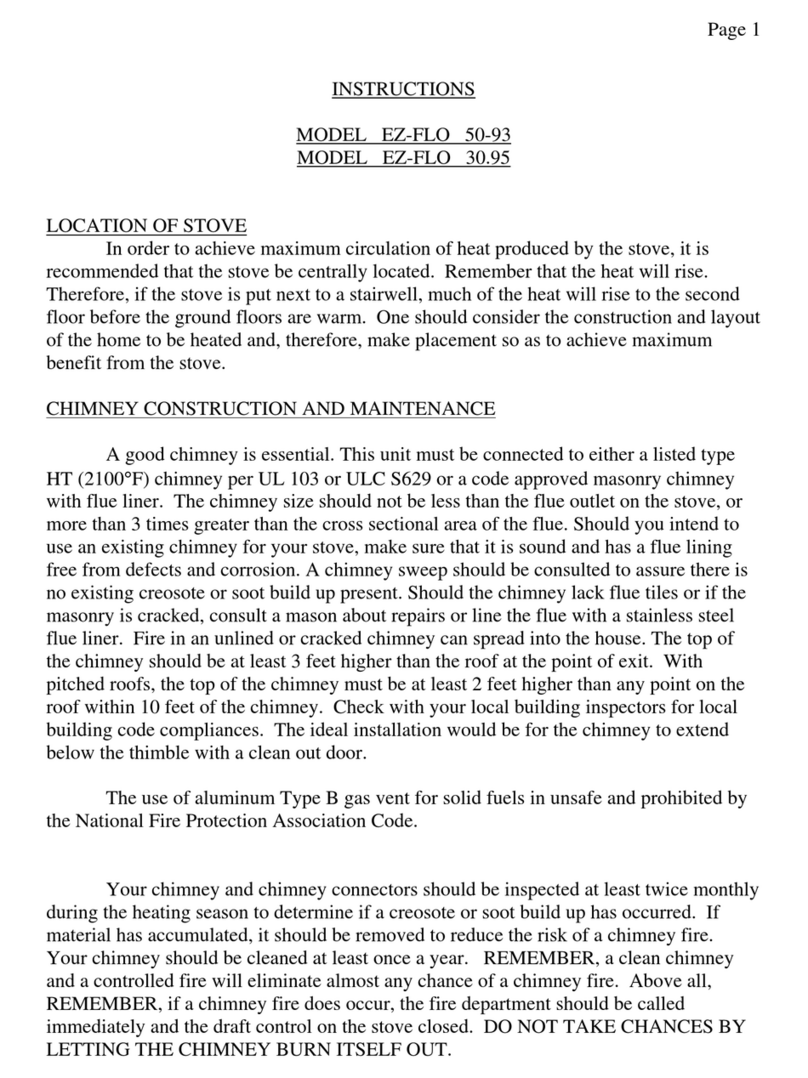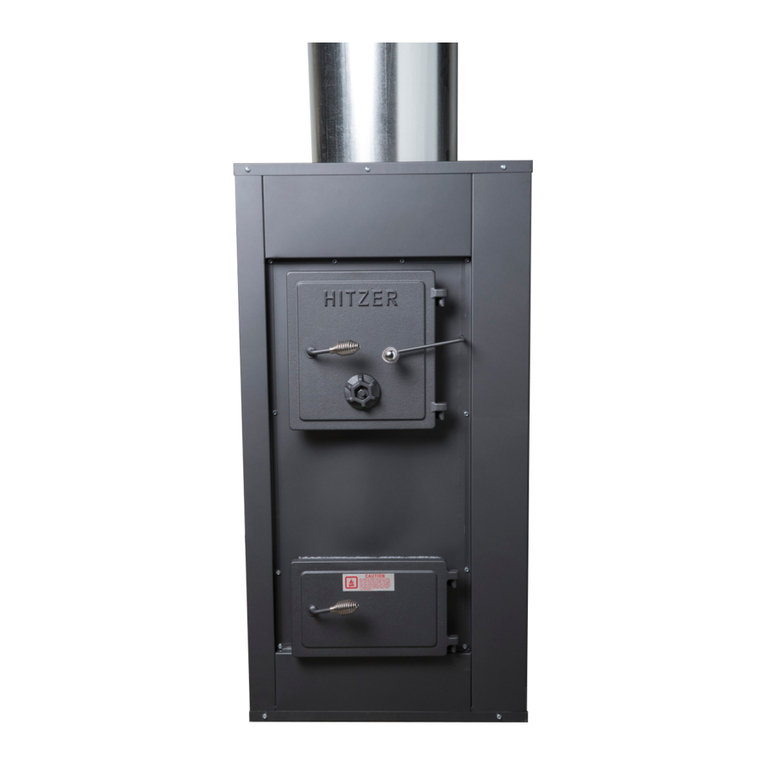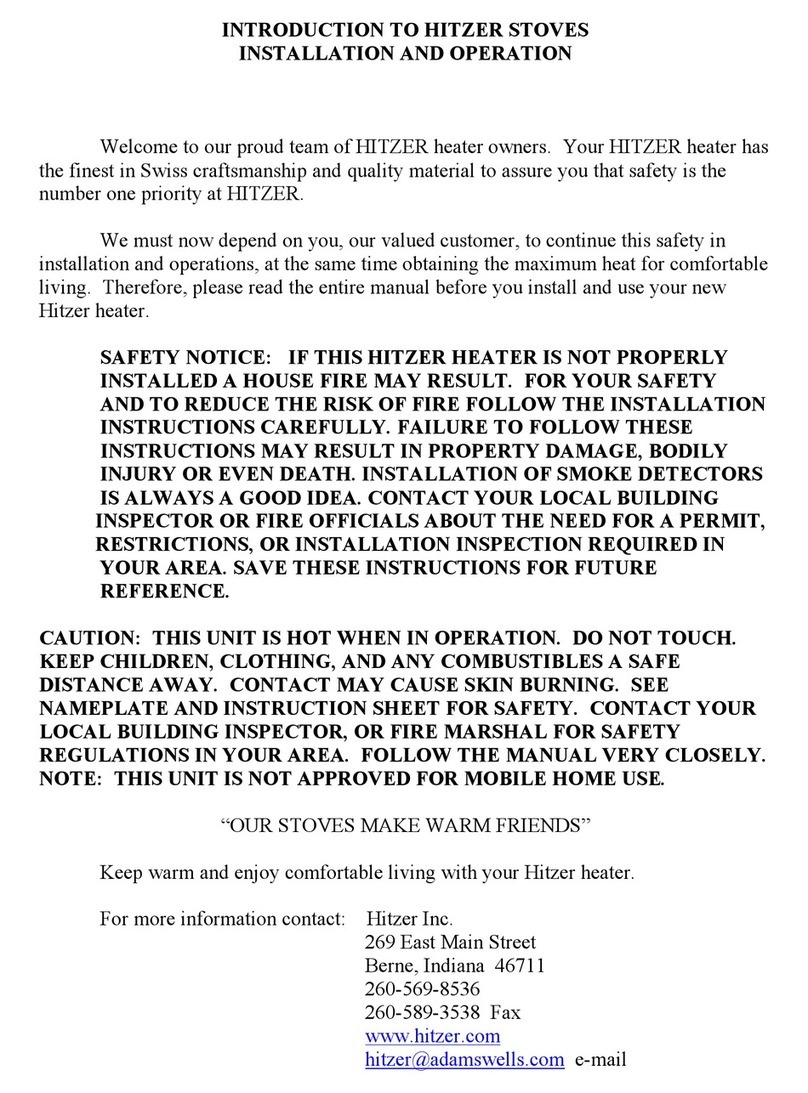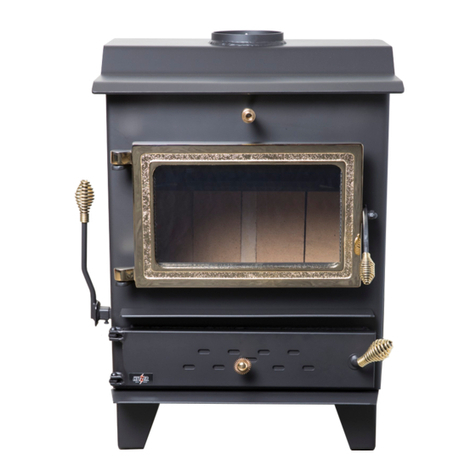
Air can also enter the fuel magazine through the spinner draft on the fuel door. When burning,
the draft should be open some to eliminate the possibility of the heater puffing and blowing out
smoke.
DIRECT DRAFT DAMPER
In front of the fuel door is the operating handle for the direct damper. When this rod is
turned up, the damper is opened connecting the top of the fuel chamber to the flue. This direct
damper should normally be closed except when the door is opened for fueling. It may be wise to
leave the direct damper open at times in the fall and early spring to help prevent creosote or soot.
The direct damper’s purpose is to reduce smoking from the open fuel door. If the direct draft is
not closed during regular operation, the benefit of the complete combustion design will be lost.
INSTRUCTIONS FOR BURNING
Fuel to be used is coal. It is essential to control your fire properly, that your ash and fuel
door be closed at all times when burning your HITZER HEATER. These doors are gasketed to
insure proper seals.
Set your dial heat regulator to open the draft damper. Start your fire by placing a small
amount of crumbled paper in the firebox, place a small amount of kindling and ignite the paper.
When kindling is burning add approximately 2 inches of coal over the entire grate area. When
the coal is burning good and glowing red add 2 inches of coal. Once this deeper coal is burning
good you can add as much as you want to extend the burn time. Make sure your dial heat is set
to keep the fire burning properly.
NEVER USE Gasoline, Kerosene, Charcoal Lighter Fluid, or any type of flammable fluid
to start your fire. Keep all such liquids well away form the heater while it is in use.
Your HITZER heater is designed to burn coal with the same heavy-duty cast iron grate.
When burning hard coal, we suggest the use of the nut size coal. If the chimney provides poor
draft, stove size coal should be used. When burning soft coal, use either nut or stove size coal.
When refueling the heater, add approximately 20 lbs. coal covering lightly the live coals
with fresh coal.
After adding fuel, it is best not to open the heater again for several hours, or until the coal
has been burning good. This will help prevent smoke from being discharged into the room.
When burning coal, it will be necessary to shake the grates morning and evening. Shake
until live coals begin to fall. If the fire does not promptly respond when the regulator damper is
opened, it may be necessary to shake the grate again to remove more of the ashes. Be sure that
the grate bars are in a level position. Do not permit ashes to pile high in the pan. THERE
MUST BE AN AIR SPACE OF A FEW INCHES BETWEEN THE ASHES AND THE GRATE
BARS TO PREVENT DAMAGE SUCH AS WARPING TO THE GRATE BARS THROUGH
OVERHEATING. REMEMBER, WHEN BURNING COAL THE ASH PAN SHOULD BE
EMPTIED DAILY.
Likewise, when burning coal, the spinner draft damper in the fuel door should be opened
slightly at all times to purge the magazine from gas and prevent puffing.
When coal is burned, the products of combustion combine with moisture to form a soot residue,
which accumulates on the flue lining. When ignited, this soot makes an extremely hot fire. The







